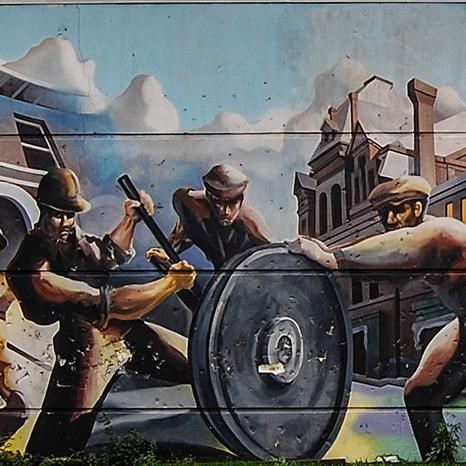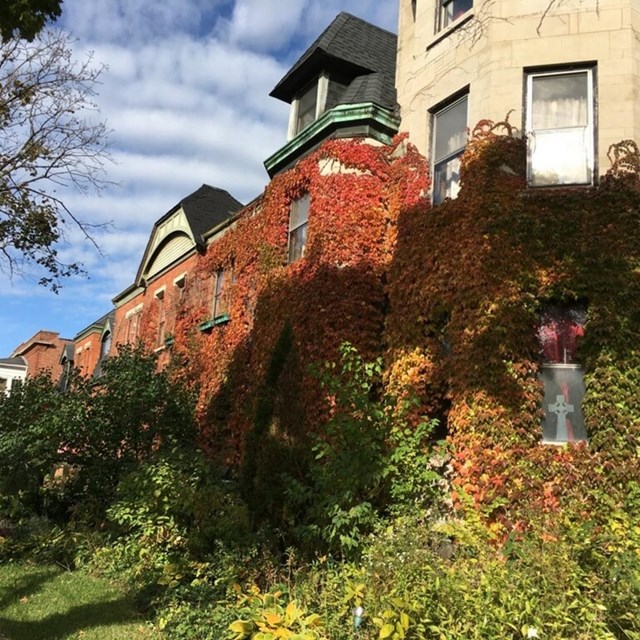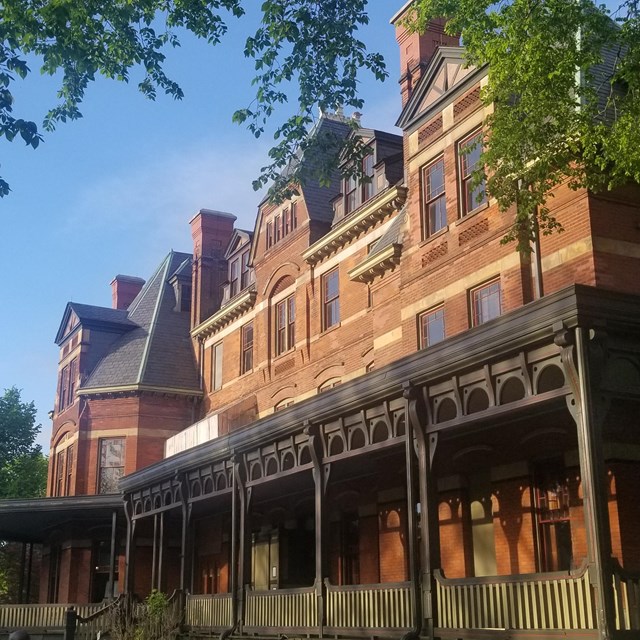
Library of Congress Image 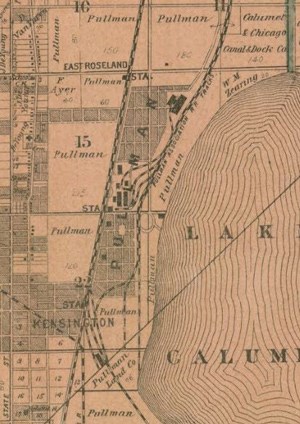
Library of Congress Image COMPANY TOWN
Demand for Pullman cars and a growing workforce led Pullman to the development of his company town. The Pullman Palace Car Company purchased 4,000 acres for its town and factory between Lake Calumet and the Illinois Central rail line south of Chicago. Architect Solon Spencer Beman and Landscape Architect Nathan Barrett were hired to design the buildings and layout of the Pullman and factories. Housing for workers was separated from the industrial areas and took shape primarily as row houses with streets in front and alleys in the rear for the daily trash collection. Indoor plumbing and relative spaciousness put Pullman's accommodations well above the standards of the day. Benezette Williams was the engineer hired by George Pullman to design the sewage system underneath the town. Groundbreaking occurred in spring of 1880, and work proceeded at a furious pace, with over 100 railroad cars of supplies per week unloaded at Pullman over the summer. By fall, factory buildings were taking shape and work began on the first non-industrial building in town: The Hotel Florence. The first factory shops completed were those that would refine the building materials as they came in. A brickyard was built south of the site to supply materials needed for the "first all-brick city." Pullman desired buildings that would be both practical and aesthetically pleasing, so Beman designed houses in the simple yet elegant, Queen Anne style while including Romanesque arches for buildings that housed shops and services. Though he strove to avoid monotony, Beman imbued the town with visual continuity. Barrett aided the breakup of monotony by designing Arcade Park and Lake Vista in a curvilinear fashion. Though he provided a beautiful, sanitary, and orderly town for his workers and their families, George Pullman did not provide these accommodations freely. Believing a person does not value those things for which they do not pay, Pullman charged a rent to his buildings that would ensure a six percent return on the company's investment in building the town. 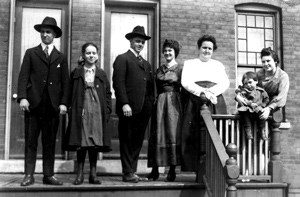
Illinois Department of Natural Resources. THE COMMUNITY
The factories at Pullman attracted thousands of people, the majority of which were skilled workers. These workers commanded a higher salary than unskilled workers, and Pullman had intended his town to attract and retain these employees. The company made efforts to employ women in "appropriate" jobs such as sewing. By the fall of 1883, the population of Pullman topped 8,000. Ethnically diverse, less than half of Pullman residents in 1885 were native-born, most being immigrants that were documented as Scandinavian, German, English, Dutch, and Irish. Not all workers at the Pullman factories lived in Pullman. Out of necessity or choice, many moved out to the surrounding neighborhoods that developed. In 1892, 849 pullman workers owned homes in the immediate neighborhood area. The town of Pullman had restrictions on certain activities as well as restrictions on what could be done with the rented homes, the neighborhoods outside the immediate Pullman area provided places for single-denomination houses of worship, saloons, and property ownership that were not possible in Pullman. Learn More
|
Last updated: January 8, 2023

